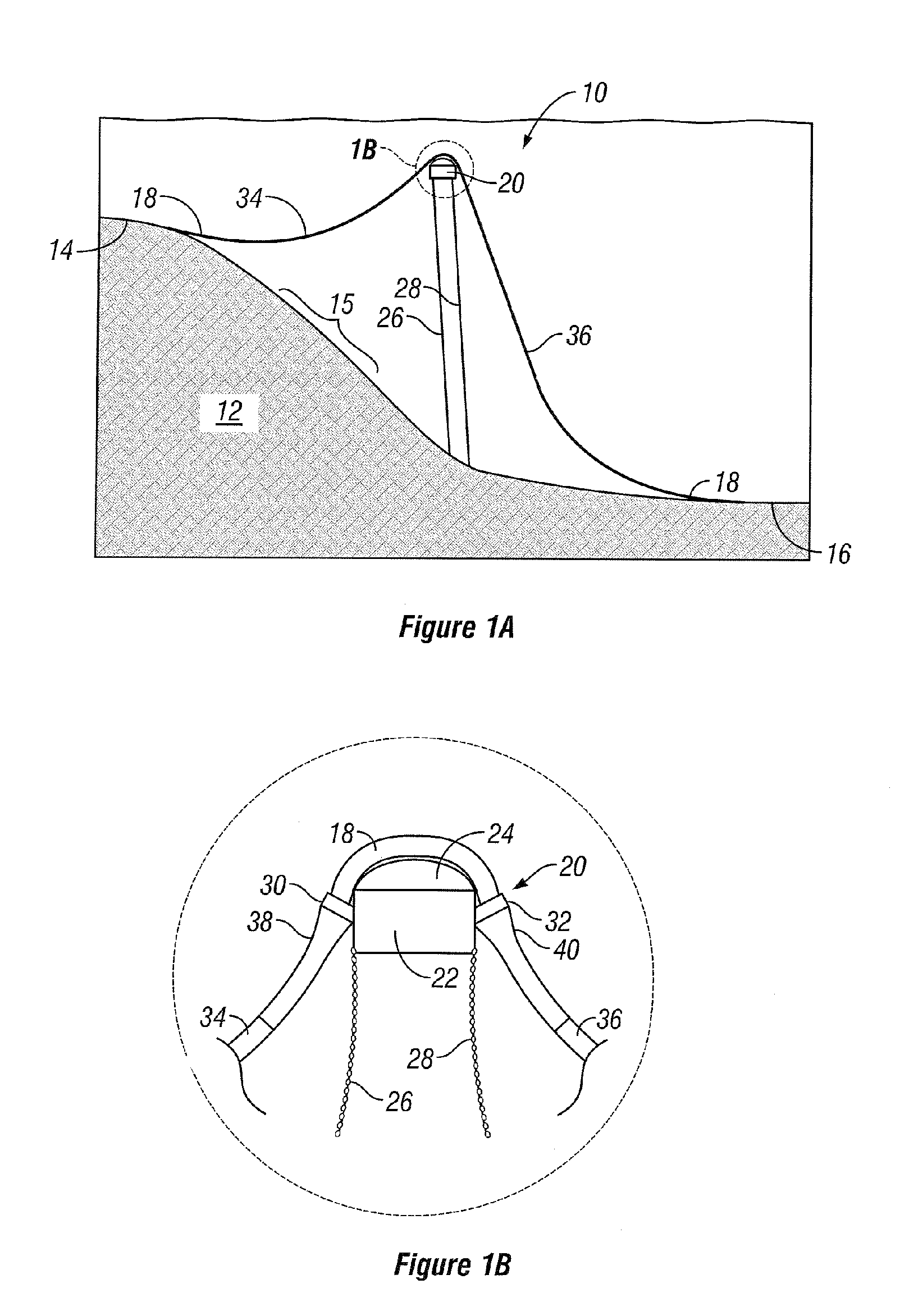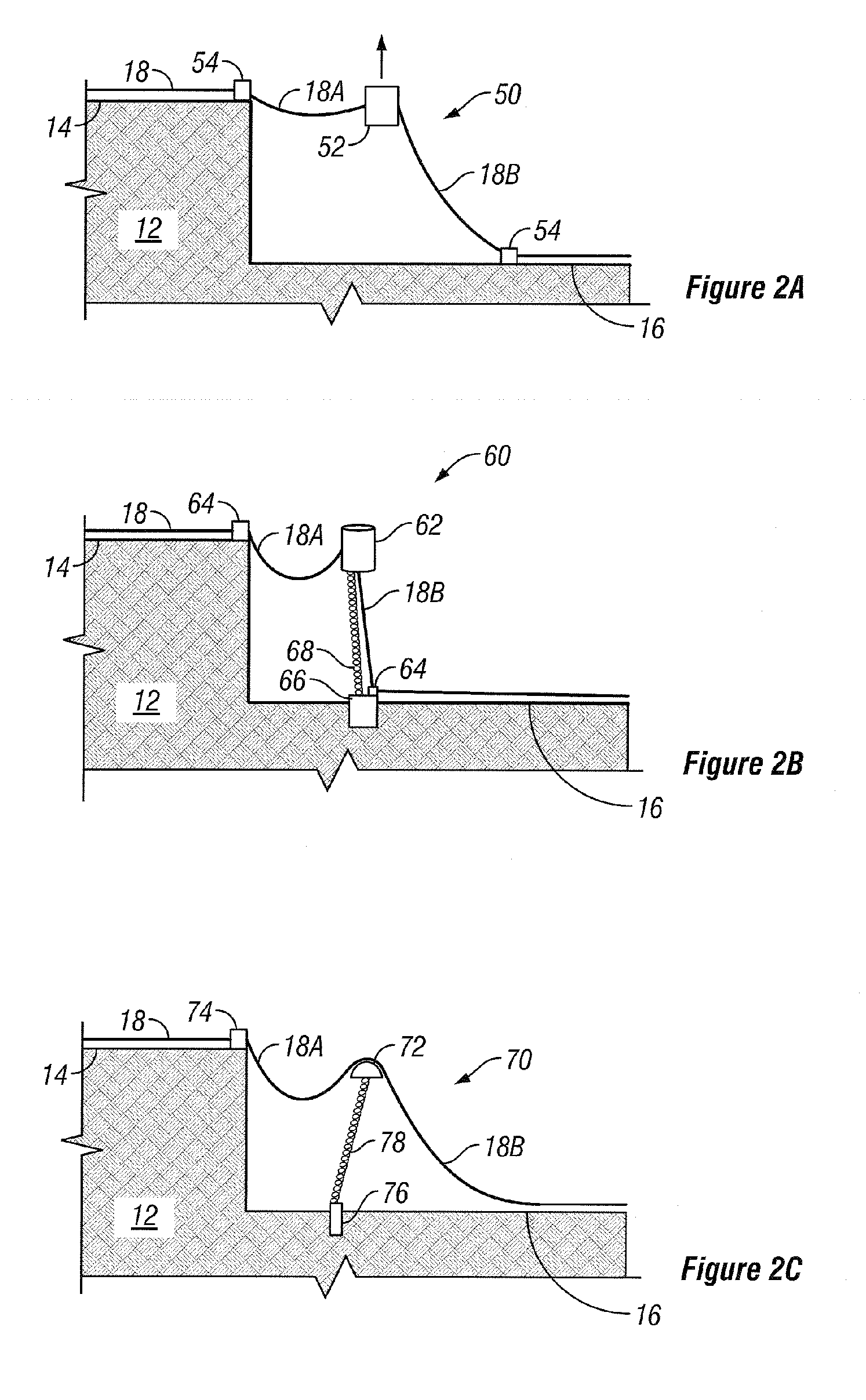Concentrated buoyancy subsea pipeline apparatus and method
a technology of buoyancy and pipelines, applied in mechanical equipment, pipe laying and repair, pipe supports, etc., can solve the problems of pipelines crossing the ocean bottom to bend sharply, dangerous topographic features that can compromise pipelines and subsea structures, and complex topography
- Summary
- Abstract
- Description
- Claims
- Application Information
AI Technical Summary
Problems solved by technology
Method used
Image
Examples
Embodiment Construction
[0020]Referring initially to FIGS. 1A and 1B together, a schematic of a concentrated buoyancy pipeline system 10 is shown. System 10 is shown traversing an undersea scarp 12 and extends from the top 14 of scarp 12, across a slope 15, to a bottom 16 of scarp 12. System 10 includes a length of pipeline 18 in a bell-shaped configuration as it traverses scarp 12. While a scarp 12 is shown, it should be understood to one of ordinary skill in the art that various other topographic obstructions and hazards including, but not limited to, basins, domes, valleys, cliffs, and canyons, may be traversed without departing from the spirit of the invention.
[0021]To traverse scarp 12, a concentrated buoyancy assembly 20 is located approximately mid-span along pipeline 18 to make it positively buoyant. Buoyancy assembly 20 desirably includes a buoyancy device 22, a profiled surface 24, and one or more tethers or mooring lines 26, 28 to secure concentrated buoyancy assembly 20 in place. Optionally, pi...
PUM
 Login to view more
Login to view more Abstract
Description
Claims
Application Information
 Login to view more
Login to view more - R&D Engineer
- R&D Manager
- IP Professional
- Industry Leading Data Capabilities
- Powerful AI technology
- Patent DNA Extraction
Browse by: Latest US Patents, China's latest patents, Technical Efficacy Thesaurus, Application Domain, Technology Topic.
© 2024 PatSnap. All rights reserved.Legal|Privacy policy|Modern Slavery Act Transparency Statement|Sitemap



